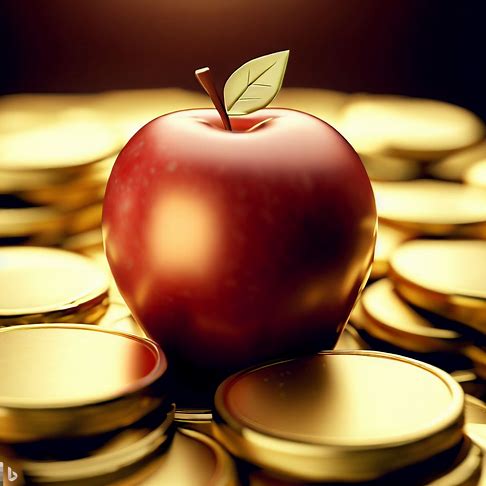It’s now been a couple days since the story broke that a copy of Satoshi’s Bitcoin whitepaper has been hidden away in every copy of MacOS since 2018, which are installed on about 100 million laptops in all. This story has generated loads of coverage, and I follow scads of Bitcoiners on Twitter. Yet somehow, no story or tweet I’ve encountered has ventured to ask the seemingly obvious trillion dollar question: Was the whitepaper sneaked in as a result of a rogue employee, or was this whitepaper distribution an official decision by Apple?
If it was a rogue employee, this is a moderately consequential story that’s funny as hell. The person will surely be outed (and probably fired), and she or he will surely leapfrog Bitcoin sign guy as the individual who pulled off the most subversive stunt in the history of Bitcoin.
But I’m hoping like crazy this was not attributable to a rogue employee, but was instead an official decision on Apple’s part. If so, I’d call this the biggest Bitcoin story of 2023, ahead of Fidelity’s opening the Bitcoin floodgates to its investors.

Why is this such a big deal? Because it means that Apple has officially acknowledged Bitcoin (and Bitcoin only)—note that the Kabosu Doge dog image, or anything Ethereum-related, nowhere to be found. If Apple indeed made the decision to hide a copy of the whitepaper in its OS, that decision was certainly approved by its legal department, especially given CSW’s ongoing copyright claims to the whitepaper.
Regardless of whether Apple indeed approved this, it’s only a matter of time before the company officially embraces Bitcoin. But if they did approve it, you can consider this an official embrace and I’d put the odds at 100 percent that they’ve got teams working right now on integrating Bitcoin into their product line. There are three obvious things I’m confident that Apple is destined to release:
- An official Apple Bitcoin wallet on the iPhone, integrated with the hardware and iOS in a way no third-party developer could do. Given Apple’s deep pockets, this would assuredly offer unrivaled security for any phone-based wallet.
- An official MacOS Bitcoin core node app. Think Specter desktop but with essentially no configuration requirements.
- Down the road: integration into Apple Pay. No doubt they’re already working on this, but this is a much harder nut to crack than the other two possibilities (and also vastly more consequential, as it’ll make Bitcoin payments mainstream).
In addition to these offerings, maybe, just maybe, Apple will start adding Bitcoin to its corporate treasury. At current prices, they’re one of very few companies who could afford to buy a larger stash of bitcoins than the 140,000 coins (and counting) amassed by MicroStrategy.
Regardless of whether this whitepaper distribution was Apple-sanctioned or the work of a rogue employee, my money is on my three above predictions happening by 2027. Apple is, after all, the leading technology company with a headcount of more than 160,000 employees. It’s inconceivable to me that there aren’t at least a few bitcoiners in leadership roles. So I am confident that it’s just a matter of time before my above predictions come true. But if this whitepaper release was Apple sanctioned, it signifies Apple’s taking Bitcoin seriously and that my timeline gets sped up by at least a year or two.
Apple’s release of any of these things would certainly drive price and adoption to new heights. The week Apple announces an official iPhone-based wallet, I’d expect Bitcoin to jump $10,000 and possibly trigger an unprecedented bull run.
No other company has the ability to make Bitcoin a mainstream technology quicker than Apple. Not only does Apple have the largest market cap and possibly the largest tech R&D budget of any company in the world, it controls the software and hardware stack for its products. That’s of supreme importance when it comes to making a secure signing device or node, and something neither Google nor Microsoft can presently compete with. Sure, Google has its Pixel phones and Microsoft has its Surface devices, but those are mere hobbies in terms of budget and corporate commitment when compared to the iPhone, which remains the linchpin of Apple’s ecosystem.
So the possibility that this whitepaper distribution was an official decision by Apple is by far the most important element to this story, and one I hope Bitcoin Magazine or some other Bitcoin publication will soon get us an answer to. As far as I’m concerned, this question is all any bitcoiner should be talking about until we get an answer. I’ll update this article when we know what’s up, and until then I’ll be feverishly wondering.